7 Simple Moves To Build Rock-Solid Abs While You Walk
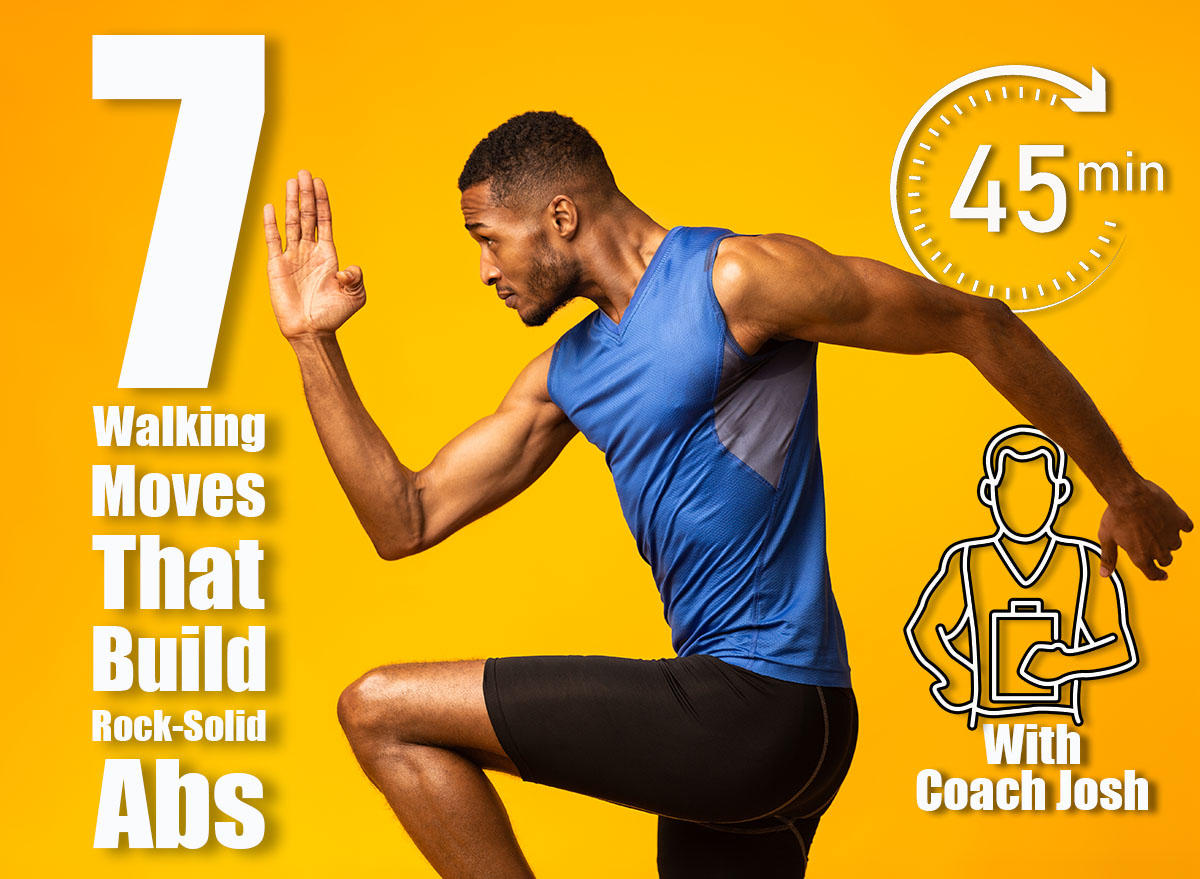
Who says you need to hit the gym floor to build a strong core? Your daily walk can become a powerful ab-sculpting session with the right moves. By combining core engagement with walking, you’ll not only strengthen your midsection but also improve your posture, balance, and overall functional fitness. Here’s how to turn every step into an opportunity to build rock-solid abs.
Why Walking + Ab Work Is More Effective Than Traditional Crunches
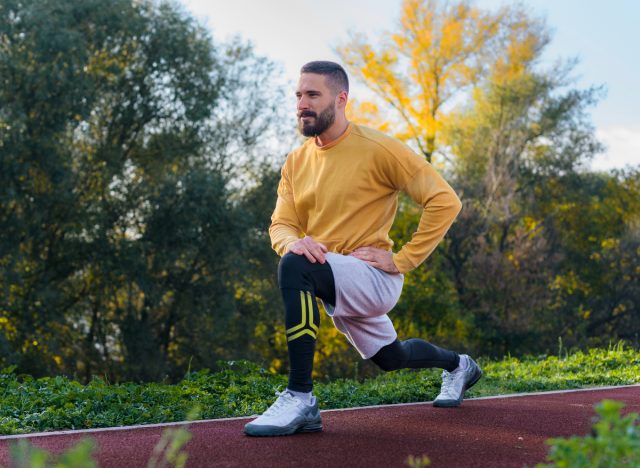
The primary reason combining ab work with walking is more effective is because the movements are functional and engage multiple muscle groups simultaneously. Walking with your core muscles engaged forces your core to work continuously to stabilize your torso and maintain balance in each step. This dynamic movement provides more functionality than isolated exercises. Strengthening your abs will also aid in better posture and reduce lower back pain to improve long-term health, along with increased calorie burn.
For people with joint issues and beginners, walking is a great low-impact exercise to allow for physical activity engagement without overexerting the rest of your body. Walking will also naturally engage the core muscles with every step to help stabilize your body, enhance balance, and coordination as a foundation for fitness and everyday movements.
The 7 Simple Moves for Rock-Solid Abs
Walking Lunges
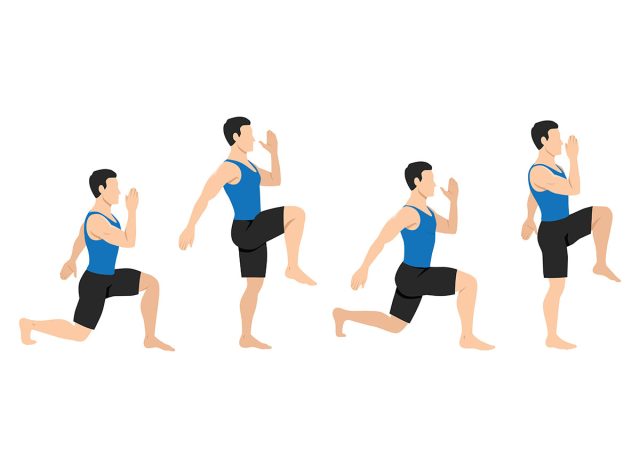
How to do it: Begin by taking a slightly extended step forward. Bend at your knees until at a 90-degree angle. Press back up through your feet and engage your core. As you stand back up, bring your back foot forward with a step through. Repeat the motion as you continue to move forward.
Frequency: Perform 10-12 walking lunges every two minutes throughout your walk.
Muscles targeted: In order to stabilize your torso during the workout, walking lunges target the rectus abdominis, obliques, and transverse abdominis.
Beginner modifications: As a beginner you can take shorter strides or try reverse lunges to work on balance. Another modification is to bring your feet together in a neutral position to add a pause before taking the next step forward.
Safety tips: It’s important to not take too short of a step or too long of a step to avoid putting strain on your knees, groin, or lower back. Keep your core engaged to help keep your body in a stable position without leaning too far forward or back.
High-Knee Walks
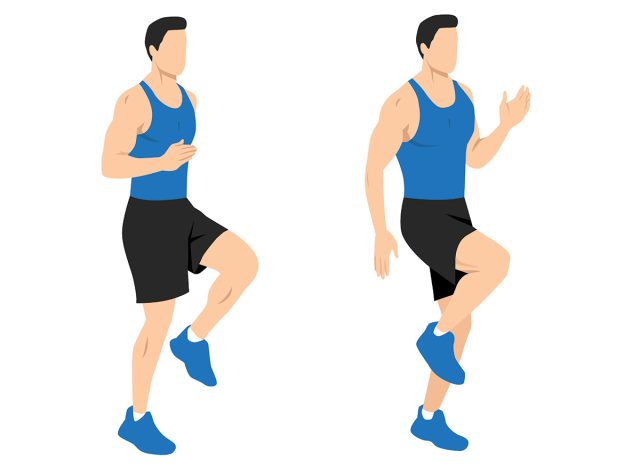
How to do it: Find a comfortable walking pace. Engage your core. Lift and drive one knee towards your chest as you step forward. Lower it back down while simultaneously lifting the other knee.
Frequency: Do high-knee walks every 10 minutes for 30 seconds.
Muscles targeted: This move targets your upper and lower rectus abdominis, obliques, and hip flexors.
Beginner modifications: The easiest modification is to begin by pausing and marching in place then continuing your walk.
Safety tips: The biggest mistake to avoid is leaning too far back or forward by not engaging your core as this create imbalance and poor stability.
Walking Oblique Twists
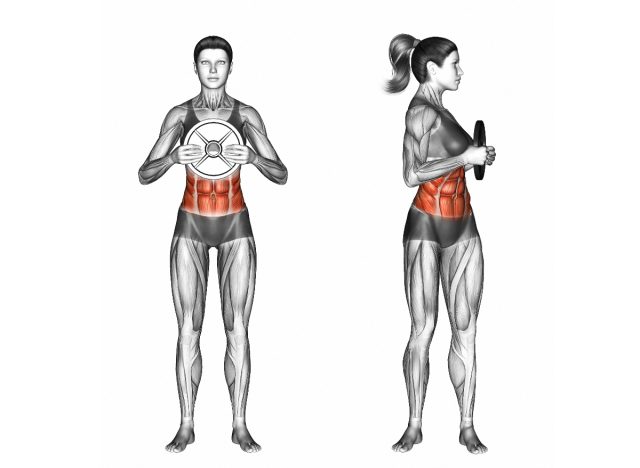
How to do it: Interlock your fingers behind your head or at chest height. Step forward with one leg and rotate your torso towards that leg. Switch sides with your next step and repeat this movement.
Frequency: Complete one to two minutes of this exercise every 10 minutes.
Muscles targeted: The primary focus of this workout is the internal and external obliques. This will also help work the rectus abdominis, transverse abdominis, hip flexors, and lower back muscles.
Beginner modifications: Focus on the twist rather than the walking movement as a beginner. This can be done by taking a step then pausing and twisting before continuing your walk.
Safety tips: Avoid rounding your back with this exercise and keep the movement controlled rather than using your momentum to mitigate risk of injury.
Overhead Reach Walk
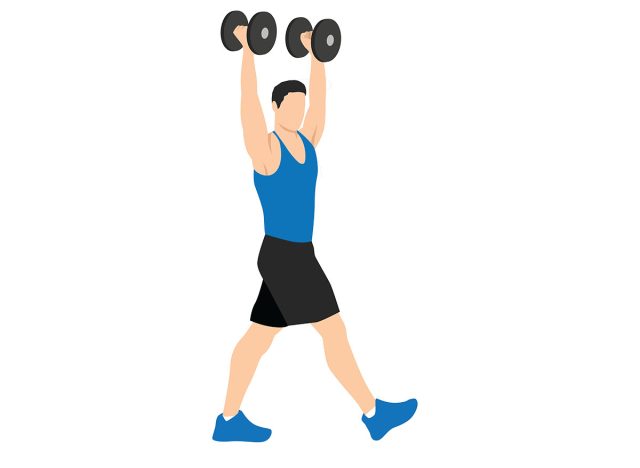
How to do it: Engage your core and relax your shoulders. Extend your arms overhead. Walk forward while focusing on stability. Hold a weight overhead for an increased challenged or add in an overhead press.
Frequency: Perform this movement every three to five minutes for 30 to 60 seconds.
Muscles targeted: Overhead reach walks target your transverse abdominis, rectus abdominis, internal and external obliques, and spinal stabilizers.
Beginner modifications: Begin with no weight or lighter weight until you feel comfortable with the movement. This will allow you focus on form before challenging yourself with weight.
Safety tips: Form is critical for this exercise to aid in standing up straight and not put pressure on your back.
Tightrope Steps
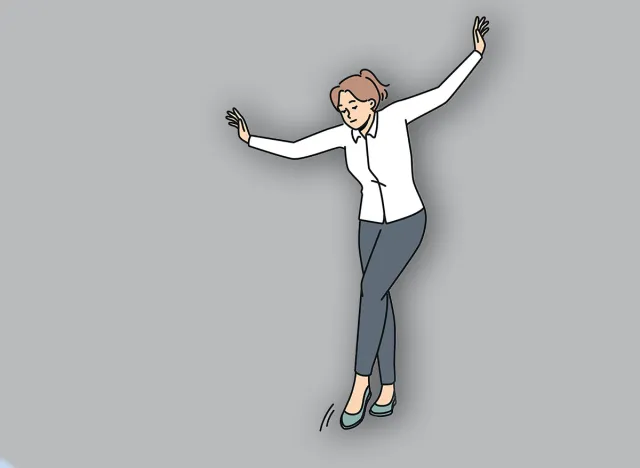
How to do it: Set your form by standing tall with relaxed shoulders and an engaged core. Take a step forward with one foot by placing your heel in front of your toes. Maintain a straight line as you continue that movement. Extend your arms out to the side to aid with balance as needed.
Frequency: Work in 10-20 tightrope steps every three to five minutes.
Muscles targeted: The primary target is the transverse abdominis with additional work on the internal and external obliques, rectus abdominis, and spine stabilizers in the back.
Beginner modifications: For beginners, it’s recommended to reduce the number of steps initially and try utilizing a visual guide, such as crack or painted line on the sidewalk.
Safety tips: One of the most common mistakes is looking down at your feet which can throw of your alignment and balance. Look up and maintain slow, controlled steps.
Heel Walks
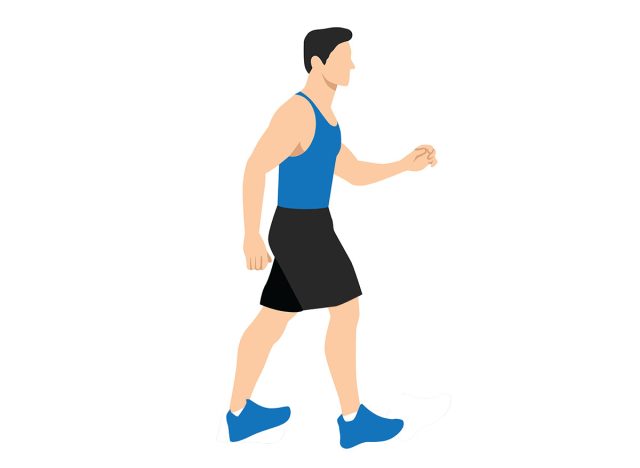
How to do it: Start with your feet hip-width apart. Lift your toes off the ground and keep your heels planted. Stand tall and engage your core. Begin walking forward with small, controlled steps and your arms extended out for balance if needed.
Frequency: Do 10 to 20 heel walks every three to five minutes.
Muscles targeted: The target ab muscles include your transverse abdominis, rectus abdominis, and obliques.
Beginner modifications: An effective modification is to practice walking indoors by holding on to a railing or wall. You can also begin with shorter distances and slowly increase the distance over time.
Safety tips: Remember to keep your torso stacked over your hips while keeping your toes pulled up.
Frankenstein Walks
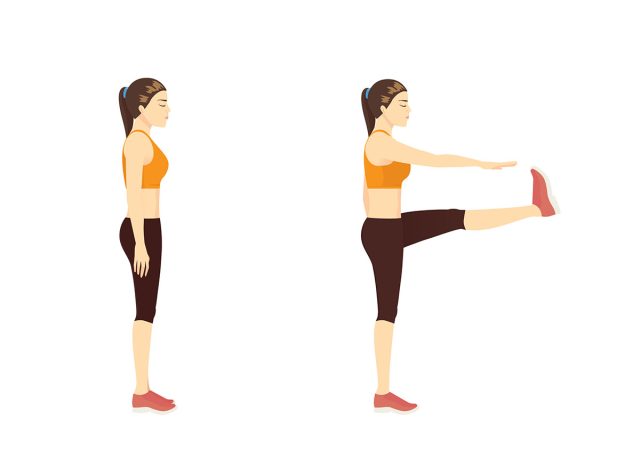
How to do it: Stand tall with your arms extended straight in front of you at shoulder height. Kick one leg straight up and reach with your opposite hand. Lower the leg and step forward. Repeat that movement with the opposite leg and arm.
Frequency: Complete 10 to 16 kicks every three to five minutes during your walk.
Muscles targeted: This workout specifically targets the lower rectus abdominis, hip flexors, obliques, and transverse abdominis.
Beginner modifications: Beginners can take lower and slower leg kicks along with slightly bending the knee if you have tight hamstrings.
Safety tips: Avoid sacrificing posture for higher kicks to get the most effective workout possible.
How to Structure Your Ab Walking Workout

A comprehensive and effective “ab walking” workout should be anywhere from 30 to 45 minutes with a brisk pace. Begin with a goal of doing the workout two to three times a week and working up to hitting three to six sessions per week to really challenge yourself. To create enhanced progression, you can increase the pace, add strength training elements such as weighted vests or dumbbells, or increase the incline of your route. Focus on what works for your body.
Finding the Right Pace and Terrain

You want to perform these moves at a moderate to brisk pace with the goal of elevating your heart rate and engaging your muscles. Aim to stay around 3 to 4.5 miles per hour as you challenge your core to stabilize your body. To safely perform these moves, look for flat terrain as you ease into the exercises. Once you feel comfortable on that terrain, add a gentle incline for more core demand.
When You’ll See Results

While marginal results take time, you will see incremental improvements within two to three weeks. Some physical changes you may notice are increased core engagement, a tighter feeling midsection, and less lower back strain. These results come down to remaining consistent in completing the routine. The more consistent you are, the quicker you will see results.